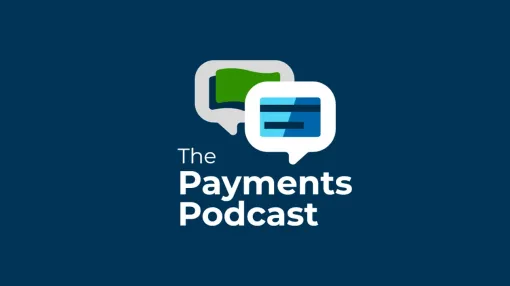It would be an understatement to say that the velocity and scale of change in the payments industry have increased significantly since the pandemic.
This is just one of the reasons the 2023 Business Payments Barometer is so essential as a window into the current state – and future influences – of corporates as they navigate the post-pandemic landscape.
The Payments Barometer illustrates both the current and future state of payments in three distinct sections: the drivers of change that show how corporates have arrived at this point in time, the cash flow management section and the factors that will influence the next three years. All show the importance of modern technology and the ability for corporates and their banking partners to secure payments within them.
First, let’s look at how we got here. The ranked drivers of change among the 1,600 corporate finance leaders split across the United States and Great Britain and surveyed by Ipsos and Bottomline during February and March, show the fading of COVID-19 concerns, which dominated 2021 and 2022, and the new priorities placed on payments technologies. For example, easier access to cloud-based technology and easier access to the subscription-based, “pay as you go” business model figured prominently in the findings from both countries followed by mobile payments, fraud prevention and AI and predictive analytics. The report also showed that respondents were more optimistic about other important issues such as disintermediation of financial services and the increasing role of fintechs, banks and other partners.
But technology won the day in the Business Payments Barometer. As the report states: "Cloud-based solutions provide the architecture to free up internal capacity, ditch legacy on-premise solutions, accelerate the move to digital payments, reduce costs, and enable new types of payments. Combined with enriched data from ISO 20022 messaging formats and the ability to accommodate cross-border payments in real-time, a more agile and robust payment environment can be created making it easier for banks and businesses to connect.”
“It’s always good to have a compendium of findings like this report from our corporate partners,” said Carl Slabicki, Co-Head of Global Payments, BNY Mellon. “The findings here sync very well with our positioning around how we embed new, digital, innovative financial services directly into the infrastructure of our corporate clients and their business partners. It also encourages them to digitize their payments processes.”
Continuing the theme of digitizing payments processes, Slabicki went on to note that it may reduce the risk of fraud, give corporates faster access to their liquidity and provide an improved client experience. He also called out the ability for digitized payments processes to displace checks, calling them “an inefficient way to collect payments and they sometimes incur more risks than digital options. Let’s also not forget that moving from paper to electronic payments can be a straightforward step toward sustainability goals. The business reasons for displacing checks are just as clear as the environmental ones.”
The future was a bit of a mixed bag when it came to cash flow management. On the plus side, when broken out specifically and weighted against technology and fraud prevention, cash management took the highest priority with technology and fraud prevention combining for a close second place. Cash management also hit the bright side with significant increases in the use of automated processes. Usage of cash flow management software jumped from 53 to 64% year-over-year in the US and 46 to 59% in GB. Treasury management software rose from 33 to 44% in the US and 27 to 37% in GB. Large enterprises led the way in adopting treasury management.
Cash flow management took a less optimistic tone when it came to forecasting. Financial decision-makers continue to feel pessimistic about the accuracy of their forecasts, with the majority of respondents in both countries saying they are seldom accurate, with small businesses less likely than average to share this sentiment. This finding has implications for any company of any size wanting to predict their cash position as it changes to due increased or decreased volume or measuring the effect of a change in strategy.
Finally, finance leaders were asked to predict the key influences on payments for the next three years. Here fraud prevention, digitization of finance and the acquisition of new payments technologies topped the list. Those findings led the report to come to the following conclusion: “While financial decision-makers are rightly optimistic about the impact of new payment technologies on their businesses, there are challenges involved in migrating to a future payments landscape which is faster, more transparent, less risky, and cost-efficient. Although the various payments initiatives are moving in the same direction, their lack of synchronicity makes the process fragmented and challenging to work through. Businesses must grasp the opportunities on offer, at the same time as ensuring their fraud detection and prevention technologies are keeping pace with innovation.”
“I’ve gone on record saying that fraud and risk management is among the most important trends to follow for the future,” Slabicki said. “As real-time or instant payments gain traction, we're seeing a much bigger need for value-added data services that can pre validate the status and ownership of accounts prior to transacting. So, banks will need to continue to up their game when it comes to upfront screening on payments for fraud and risk management to protect their institution and their customers as we move closer and closer to real-time.”
The Bottom Line: The report recommends that corporates determine the pace to digitize and modernize payments systems, stay a step ahead of financial fraud and identify opportunities to reshape their competitive advantage. By keeping a focus on the present, an eye toward the future and a discerning view of partnerships, corporates can create a successful payments strategy.


